Mars or Manhattan? Wildfire smoke draws comparisons to Red Planet

Wildfire Smoke: NYC air quality dips
Smoke from Canadian wildfires continues to make its way into New York City and other parts of the U.S. Briella Tomassetti with FOX 5 New York joined LiveNOW from FOX's Josh Breslow with a look at conditions in the Big Apple.
Many people in New York City might have felt like Martians this week when smoke from more than 400 Canadian wildfires descended on the Northeast, creating other-worldly sky colors from orange to fire red.
The wildfire smoke has created poor air quality conditions for more than 100 million people and even hazardous ratings – the most extreme rating on the Air Quality Index – for major cities, including New York City, Philadelphia and Washington.
The light-scattering effect of the smoke molecules turned the sky several shades of red throughout the day Wednesday and had some asking, is this Earth or Mars?
Why does the sky turn orange or red from wildfire smoke?
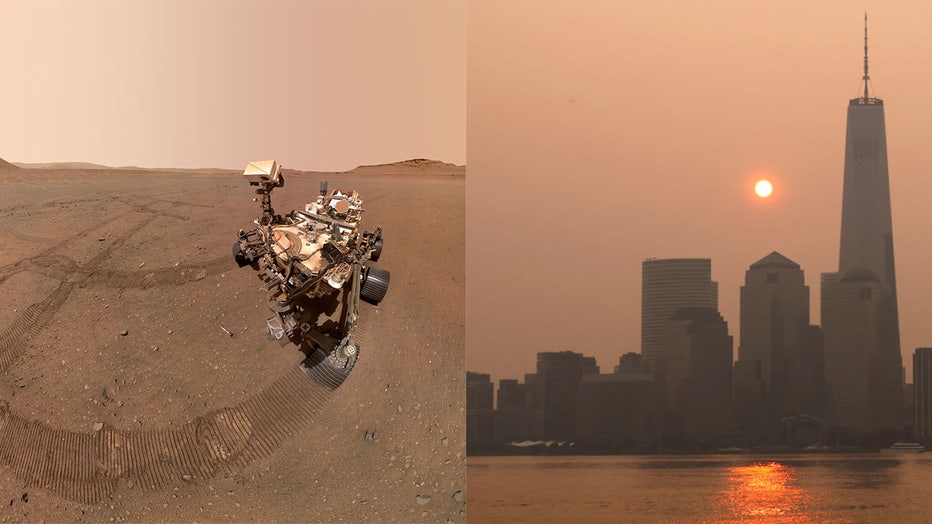
On left, a selfie taken by NASA's Mars Perseverance rover in the Jezero Crater on Jan. 29, 2023 on the planet Mars. On right, a view from Jersey City, New Jersey showing the smoke-filled sky behind the skyline of lower Manhattan and One World Trade C (NASA JPL/ Getty Images)
Mars is nicknamed the Red Planet because of its color. Mars gets its rusty color from the large amounts of iron on its surface.
On Earth, the sky changes colors because of how light is absorbed and reflected by different molecules.
This week, because of the ongoing wildfires burning in Canada and weather patterns sending smoke down into the U.S., the sky has been orange and red in some places. Smoke molecules do better scattering wavelengths of red light. As the smoke particle concentration builds, the redder the hue in the sky. The result of the very dense smoke on Wednesday created out-of-this-world skies in New York and New Jersey.
Below is a view of the Raritan River in New Jersey on Wednesday.

A view of New Brunswick, New Jersey with the Raritan River on June 7, 2023. The skyline is covered in a thick blanket of smoke. (Kyle David / FOX Weather)
Below is a view of Mars from NASA's Perseverance Rover taken in February.
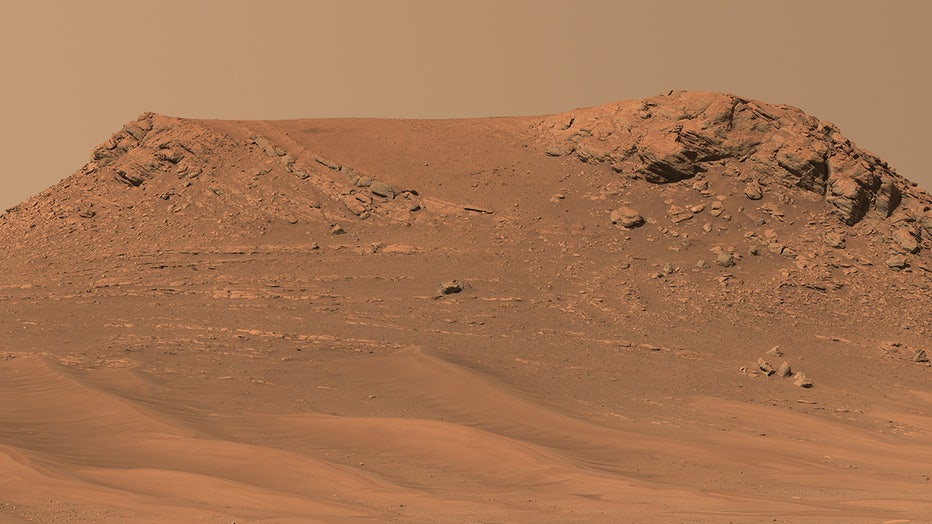
The mosaic image shows a hill on Mars nicknamed "Pinestand." The image was created by a series of images captured by NASA Perseverance rover's Mastcam-Z camera on Feb. 26, 2023. (NASA)
Smoke creates the same red-orange color-changing effect on the moon and the sun. A blood-red moon rose over Philadelphia on Monday when the smoky conditions began to descend into the Northern U.S. and only allowed red wavelengths from moonlight to pass through.
On Wednesday afternoon, when the smoke concentration was highest, New York City was rust-colored or red.
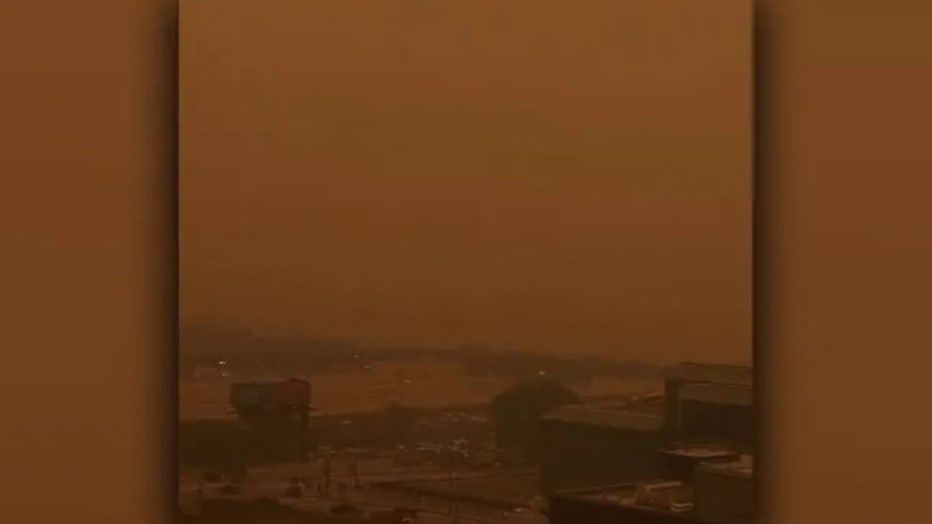
Scenes across New York City are seen on June 7, 2023, amid hazy conditions due to smoke from the Canadian wildfires. People in the city other areas are expected to have another day of bad air Thursday due to smoke from the Canadian wildfires. Air qua (Ezio Cairoli / FOX Weather)
Sunset on Mars or smoke in Washington?
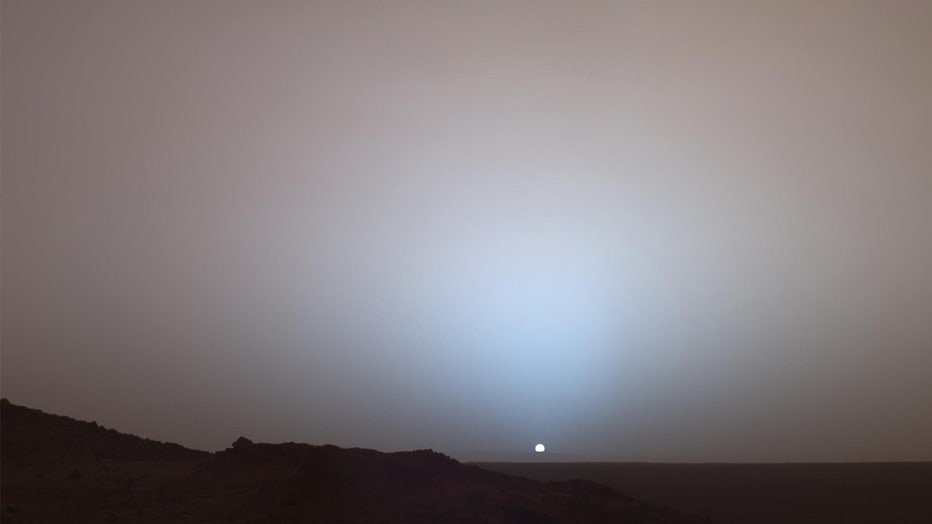
On May 19, 2005, NASA's Mars Exploration Rover Spirit captured this sunset view below the rim of Gusev crater on Mars. (NASA JPL)
The smog has created a blueish hue over some areas, including in the Washington Metro area, looking a little like the sunrises and sunsets on Mars.
According to NASA, the sky above Mars appear blue around sunrise and sunset because the light passes through large amounts of dust in the atmosphere scattering blue light. During the day, the sky is more orange because the atmosphere absorbs blue light.
Above is a sunset as seen by NASA's Spirit rover on Mars and below the Lincoln Memorial on the National Mall shrouded in smoke on Wednesday, creating a pink-blue tint in the air.
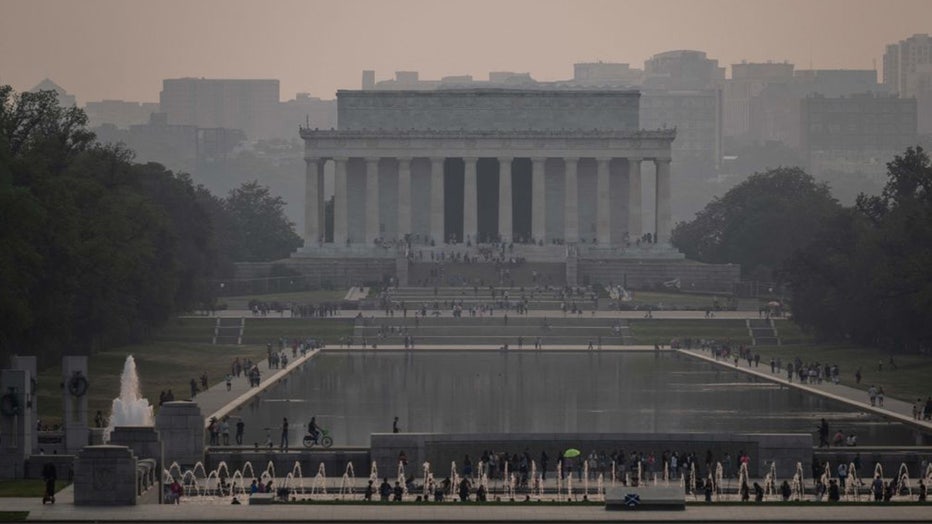
The Lincoln Memorial is seen as smoke from wildfires in Canada cause hazy conditions in Washington, DC, on June 7, 2023. (ANDREW CABALLERO-REYNOLDS/AFP via Getty Images)

